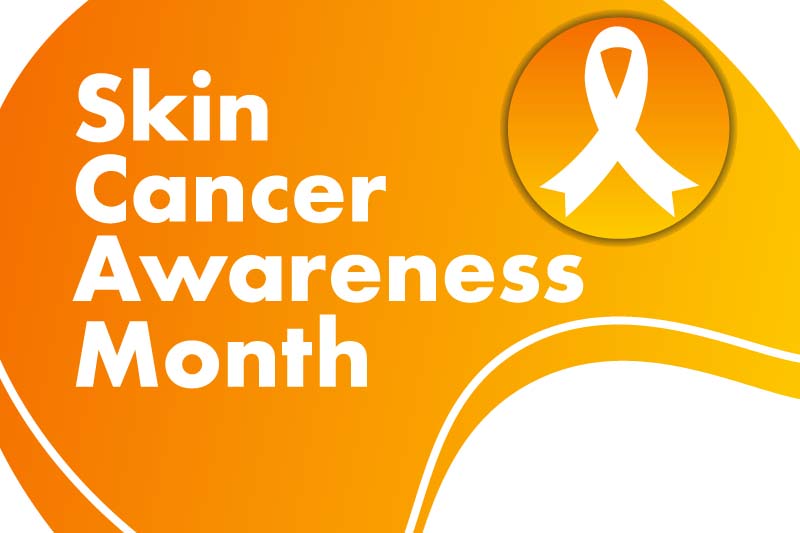By Dr. Pablo Prichard
While skin cancer is the most common cancer in the U.S., when caught early it is almost always curable. There are two different types: melanoma and non-melanoma, which includes basal cell and squamous cell carcinoma. By learning these early signs, you’ll be able to catch cancer in its most treatable stage.
Melanoma
This is the deadliest form of skin cancer, making it the most important to be aware of. Melanoma can be found anywhere on the body but is most common in areas exposed to the sun including the head, neck, upper back, torso and lower legs. It can appear suddenly or develop from an existing mole. The simplest way to spot melanoma is to follow the “ABCDE” rule. Keep these guidelines in mind when looking at a potentially cancerous area:
• Asymmetry: Moles and freckles are typically symmetrical. Make note if the area is now irregular.
• Border: If a spot that was once round is now blurred or jagged, it should be looked at by a doctor.
• Color: A mole should be one color. Any lightening or darkening could be a sign of cancer.
• Diameter: Any growth larger than a pencil eraser should be examined even if there aren’t other abnormalities.
• Elevation: Look for growths that have an uneven surface or irregularity.
Basal Cell Carcinoma
This skin cancer begins in the basal cells, which produce new skin cells as old ones die off. It typically appears as a slightly transparent bump on the skin but can also present in other forms. The following could also be signs of basal cell carcinoma: flat, firm, pale areas like a scar; raised red patches, and small translucent bumps that are pink or red or a pearl-like shine.
Squamous Cell Carcinoma
Squamous cells make up the outer layer of the skin. This type of cancer often looks like scaly patches or raised growths similar to warts with a lower area in the center. Squamous cell carcinoma is more likely to grow deep and spread locally, causing tissue destruction, so catching it early is key to a quick recovery.
Make it a goal to examine your skin once a month. If you see an area that concerns you, such as any new spots, a sore that won’t heal, or a growth that is itchy, painful or tender, share that with your doctor immediately even if you think it may not be serious. People with lighter skin are more susceptible to skin cancer than people with darker skin, as melanin, the pigment in the skin, is somewhat protective. Still, everyone should avoid the sun as much as possible and wear sunblock when outside.
Pablo Prichard, M.D. has been the Chief of Plastic Surgery at HonorHealth John C. Lincoln Hospital for 14 years, Medical Director for Plastic Surgery and is Senior Partner at Advanced Aesthetics Associates. Dr. Prichard serves more than 2,000 patients every year and has specialized in both reconstructive and cosmetic procedures. For more information, visit drprichard.com and follow on Instagram @pabloprichard.





